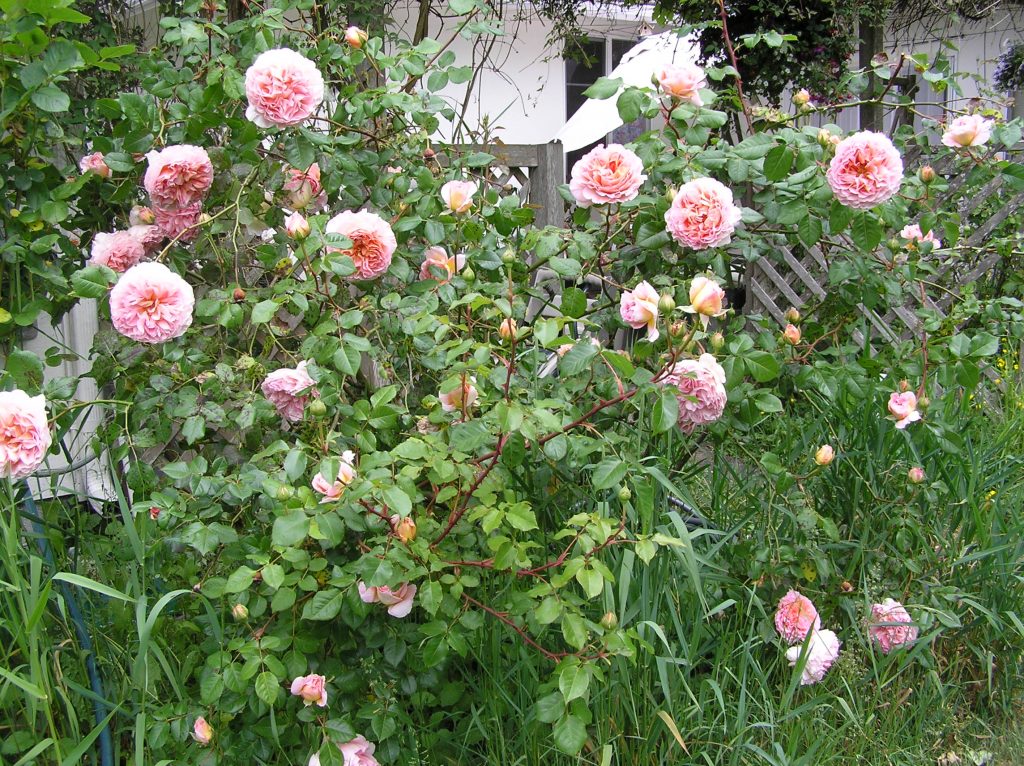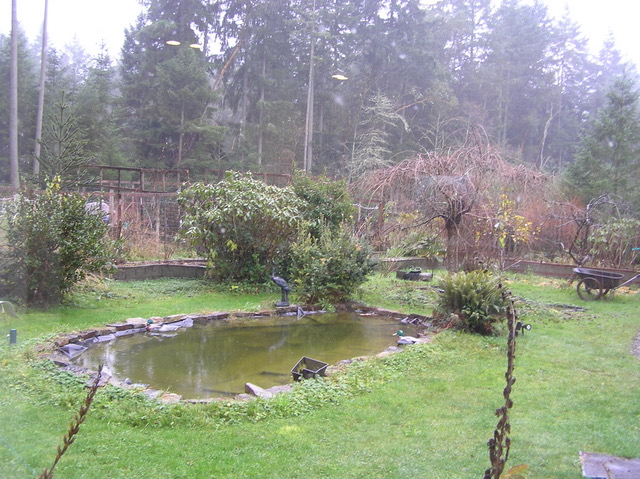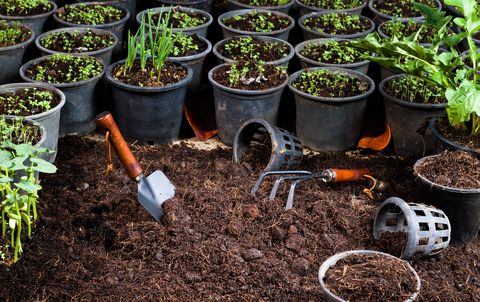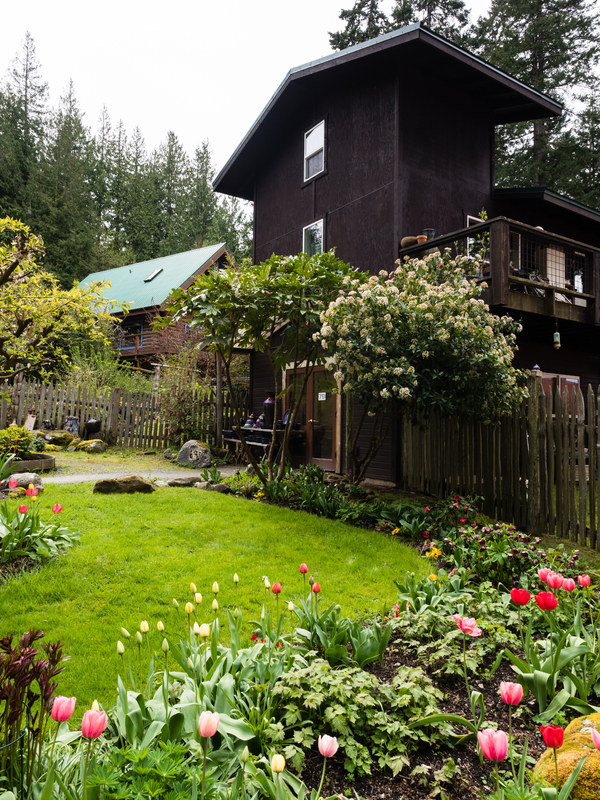Of course, one of the biggest discussion topics among gardeners worldwide is what climate change means for my garden. We tend to laugh among ourselves over the fantasy of global warming when the idea was that we would all become California girls or surfer dudes—it’s not happening that way.
As time passes and we learn more, our best guess is that the changes we see will result in more extreme weather events. The heat dome Vashon experienced a couple of summers ago is a perfect example of an extreme, unusual weather event. We are likely to have once-in-a-century windstorms more often. Setting new records for the amount of rainfall or the number of days without rain may become more common.
While we once thought changes might be uniform globally, we now see greater variations. While we had an unusually pleasant summer, poor old England was unusually cold and soggy. They had some serious crop failures due to the cold and wet.
Our little garden plots may be much the same as they’ve always been, while the Pacific coastal region of North America may see significant changes in rainfall, temperatures, and wind patterns.

So, how does the humble local gardener cope with the unpredictable? Mulch. Mulch is always our friend. It shades the soil, keeping roots cool during a hot spell and warm during an unexpected freeze. Mulch holds water to keep the soil from drying out. It’s our first defense against extreme weather. Dead leaves, arborist chips, and compost are all great for mulching. Pea gravel makes an attractive mulch. Poultry litter needs to be composted before adding it to the garden—just let it set over winter, turning it if you have time and energy. Really, what you use for a mulch depends on what is available.
The layered, glacial deposits that form our island impact how we garden. My yard was sand and gravel over a layer of clay. I sit well within the ASARCO plume, so my soil tested positive for lead, arsenic, and cadmium. I solved the problem with concrete block raised beds. If you are gardening in the ground, you have clay somewhere under whatever you’re growing in. That clay will be slow to drain in heavy rain. Watch how your gardens drain. If they tend to be waterlogged all winter and into the spring, you might want to plan for curtain drains around an area you want to use in the early spring. Basically, a curtain drain is a drainage ditch around the edge of your garden bed. A good drain should be a couple of feet below soil level, lined with heavy landscape fabric, then filled with pea gravel. The goal is to move excess water away from where you are trying to garden. Curtain drains become essential if your garden is at the bottom of a slope.
It’s normal for us to have six weeks without rain every summer. Native plants are adapted to our maritime climate so they’re fine with this. However, the poor things are not adapted to the oddities that a pissed-off Mother Nature has been throwing at us. After the heat dome, I needed to water parts of my yard I’d never watered in the twenty-some years we’ve lived here.
Watering becomes a challenge when we get excessive heat in June or long dry spells in the spring. Most avid gardeners have some sort of irrigation system set up for those things that take more water. We don’t have irrigation for established shrubberies because, in the past, we’ve never needed it. Between odd droughts and unusual heat spells, my poor rhododendrons are suffering. Several have up and died. They shouldn’t be dying, but I can see why they just got too stressed. My solution for those isolated plants that may need a little extra water at odd times is to bury an olla near the roots. An olla is a Native American method of irrigation. Basically, it’s an unglazed clay jug with a narrow neck that’s filled with water and buried near your plants. I make my ollas out of an unglazed clay pot with a lid on top. I’m experimenting with plastic milk jugs with a few small holes punched near the bottom this year. They drain faster than the clay pots, but they should work to get water where it needs to be without wasting it.
Finally there is the unusual wind storm. Just as we weren’t prepared for the heat dome, drought, and torrential rains, our gardens aren’t built for high winds. My flimsy trellises that hold up the sweet peas are fine for normal weather. I’m sheltered by huge fir trees, but we had some odd gusts come through a couple years ago that flattened all my fall flowers. I’ve started using metal stakes with a flange for staking dahlias and zinnias. Peas, beans, and sweet peas are still on their flimsy trellis, but that sucker is anchored to the ground with four metal flanged stakes.
It isn’t the wind storms predicted on the weather stations that get my plants. The odd gusts coming out of the east or from the Northwest do the damage. The best we can do to prepare for the weird wind pattern is to stake everything down. I used to use some lightweight cold frames, but the east wind ripped those apart. I need to replace them with something sturdy that can be hooked securely into the ground.
It would have been nice if climate change had been a stable, predictable change in our weather patterns. I wouldn’t mind having weather like San Franciso’s. That just isn’t what is happening. What we’re seeing is way more chaotic than what we were first told. The story of climate change may change again and yet again. The truth is that we don’t know what the future may bring. The best we can do is use good gardening practices and plan how to cope with the unusual weather patterns. We will lose some plants or whole crops, but we’re gardeners, so we’ll try something different next year.








